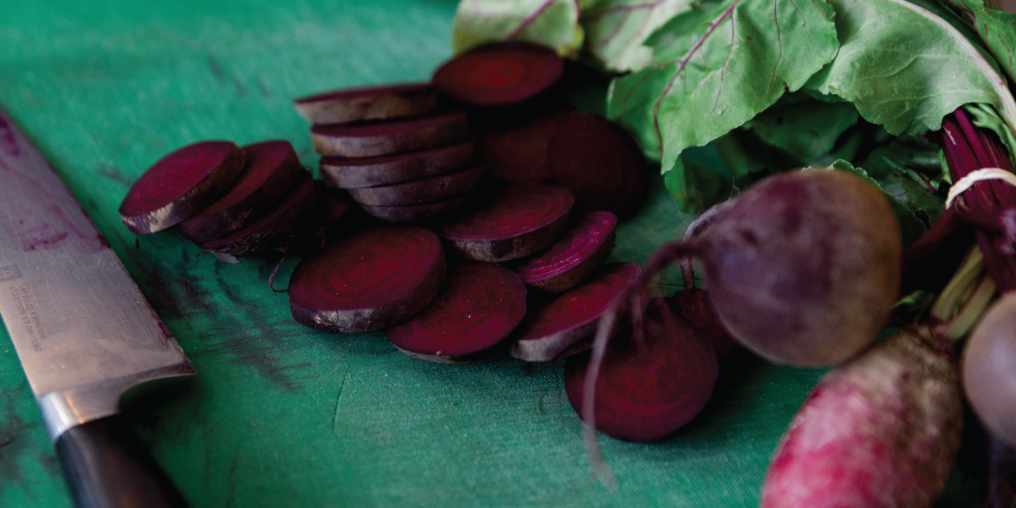I’m writing these words in the height of summer, when I barely have enough time to juice a cucumber. But it will be fall by the time this issue finds its way into your hands, and this new season will bring the desire, and time, to take things more slowly.
In my previous food-related articles, I’ve avoided precise recipes and offered more general guidelines on how to approach certain vegetables—more of a cooking philosophy. But in the case of beets, I have a novel technique to impart upon you, one I don’t see widely broadcasted in cookbooks or blogs. I can understand why this approach isn’t often adopted: it takes time, which can be hard for many of us to come by.
I call this recipe “chewy beets” because that’s exactly what they are. They’re rich, sweet, and earthy in the way that beets inherently are, but the chewiness is a characteristic they can only obtain with time and careful attention.
Begin by acquiring a large quantity of beets. This technique works well with high volumes that help justify its extended period in the oven. Since you won’t be using the tops for this recipe, storage beets are fine; three to five pounds are reasonable. Peel them, then cut into fat coins (roughly 4 mm). Toss in olive oil and salt, then place on a sheet pan (or two) and roast in a convection oven at 325°C. It’s okay if the beets are piled on top of each other, as this process will take several hours and the beets will shrink significantly as they cook. You could produce a similar result in a regular oven, but it will require more regular flipping and diligence to ensure even cooking.
Settle in, relax, read other articles in this issue, but don’t wander far. You’ll need to keep checking in on your beets as they roast.
If they’re cooking unevenly, it’s advisable to flip them around in the pan, or even re-toss them in a large bowl, then spread them back in the pan. Be careful not to let them brown—caramelization is not what you’re looking for. If this is happening, make sure your oven is on convection and try dropping the heat. If done correctly, the beets will slowly transform until their texture is leathery. Watch closely and pull pieces from the pan as they take on the desired effect.
When you’re satisfied with the doneness of your beets, remove them from the oven and marinate them in a thick sweet-and-sour glaze as they cool. A balsamic reduction would serve you well here. Enjoy immediately or tuck them away for future use.
Once you’ve made chewy, marinated beets, there are many things you can do with them. Really, the options are endless. Much like humans, chewy beets can be dressed up or down to match the occasion. If you’re feeling decadent, turn them into a sexy canapé with a piece of smoked salmon and tamarind chutney. Or toss them in a salad with beets’ usual entourage of soft cheese, bitter greens, warm roasted nuts, and a tart dressing.
You could also eat them straight from the jar while wandering around the house in your underwear after a late-night fridge raid. You do you. I’m just here to encourage you to make time to get chewy beets just right. They’re worth it, and so are you.

